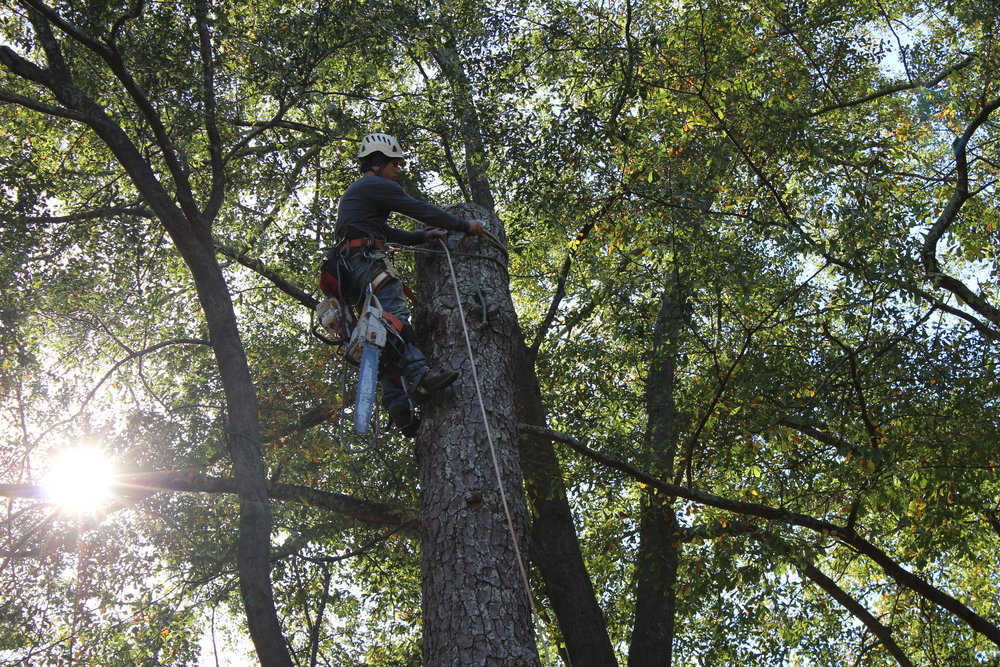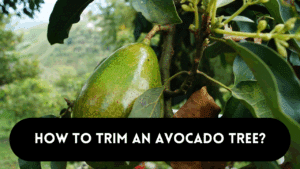Ferns on palm trees are not a natural feature of the tree. Instead, they relate to the presence of ferns or other plants that may grow as epiphytes (plants that grow on other plants) on the trunk or in the canopy of palm trees. This effect is more typically associated with tropical rainforests and lush, humid surroundings.
Ferns, mosses, orchids, and other epiphytic plants can grow on the rough and textured bark of palm trees. They normally do not harm the palm tree and use it as a support structure to gain access to light and moisture in the canopy. This connection is generally viewed as a sort of commensalism, in which the epiphytic plants benefit from the palm tree without harming it.
Ferns and other epiphytic plants atop palm trees can enhance the tree’s aesthetic appeal while also contributing to the ecosystem’s overall biodiversity. These “ferns on palm trees” are common in tropical and subtropical areas where palm trees abound.
Why Remove Ferns from Palm Trees?
Removing ferns from palm trees is usually unnecessary, and in many circumstances, it is discouraged. Ferns and other epiphytic plants that grow on palm trees do not affect the palm tree itself. In fact, this relationship is often considered commensalism, where the epiphytic plants benefit from the palm tree by using it as a support structure to access light and moisture in the canopy, while the palm tree remains unaffected.
Ferns on palm trees can improve the overall aesthetic appeal of the tree, particularly in tropical and subtropical climates. They contribute to the lush and natural appearance of the palm tree and increase the richness of the ecosystem. Ferns can also serve as a home and shelter for a variety of small animals and insects.
Tools required
- Pruning shears
- Scissors
- Hand pruners
- Garden gloves
Procedure to Remove Ferns from Palm Tree
- Wear gardening gloves and safety goggles depending on the size and density of the ferns, as well as the height at which they’re growing. These can shield your hands and eyes from any fern-frond-related irritation or scrapes.
- Pruning shears or sharp scissors should be used to remove the ferns. Trim the fern fronds as close to the ground as possible. It is critical to exercise caution during this process to avoid cutting into the palm tree’s trunk or fronds, which could result in injury or damage.
- As you trim the ferns, gather the cut fronds and store them in a bag or container for disposal. It’s critical to properly dispose of the trimmed ferns. If your local restrictions allow it, you can compost them or put them in a yard waste bin. Leave them away from the base of the palm tree, since rotting plant material can produce a damp environment that can injure the tree.
- Ferns, which are robust, may recover over time. To keep a fern-free palm tree, keep an eye on it and repeat the cutting technique as needed. Regular inspections can help you catch any regrowth early and keep the ferns from becoming a major issue.
- Improve the air circulation around the palm tree to lessen the chance of future fern growth. Trim any neighboring vegetation that may be shadowing the tree and contributing to a damp environment in which ferns grow. Remove any dead or decaying fronds from the palm tree itself, as these might create pockets where fern spores can settle.
- Finally, it’s critical to keep the palm tree in good health. Healthy palms are more healthy than unwanted plant development, such as ferns. Provide adequate care for the tree, including frequent watering, feeding as needed, and safeguarding it from common palm tree pests and illnesses.
The Best Time to Remove Ferns from Palm Trees
Your individual objectives and the condition of the ferns will determine the best time to remove ferns from palm trees or other plants. However, the growing season, which typically runs from late spring to early summer, is a generally good time for fern removal.
At this time, the ferns are actively growing, and trimming them back can help manage their growth. It is critical to monitor ferns and remove them before they become overgrown and perhaps overshadow or stress the host palm tree.
Trim them during the dormant season in late fall to early spring for better removal, especially if the ferns have become a nuisance. During this time, the ferns are less active, making it easier to cut them back. Finally, the timing should correspond to your landscaping goals as well as the individual qualities of the ferns and palm trees in your garden.
FAQS
Why should I remove ferns from my garden or palm trees?
Ferns can grow invasively, crowd out other plants, and affect the health of palm trees. Getting rid of them contributes to a healthy garden ecosystem.
When is the ideal time to get rid of ferns?
Your objectives will determine the best time for you. Trim during the growing season (late spring to early summer) for upkeep or during the dormant season (late fall to early spring) for more extensive removal.
Can I use conventional gardening tools to remove ferns?
Pruning shears, scissors, and hand pruners are all appropriate instruments for fern removal. To ensure proper cutting, keep them clean and sharp.
How can I avoid fern recurrence after removal?
Regular monitoring and maintenance are critical. Improve air circulation and overall garden health to discourage fern regrowth.
Is it necessary to remove all ferns, or can some be left for aesthetic reasons?
That is up to you. Some ferns may cohabit with other plants and add to the charm of the garden. The key to success is balance.
Conclusion
Removing ferns from your palm trees is a task that can help you maintain a healthy and visually appealing landscape. Whether for upkeep or substantial removal, choosing the right time, using the right tools, and keeping an eye on regrowth are all critical aspects of achieving your ideal garden aesthetics and health. A healthy garden ecosystem can be created by striking a balance between removal and preservation.




